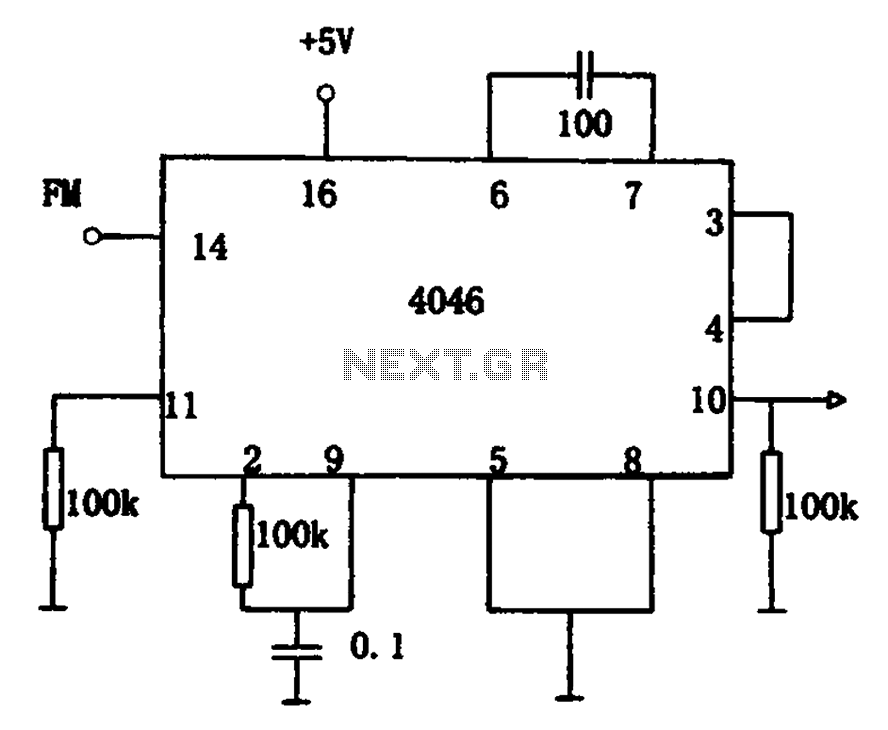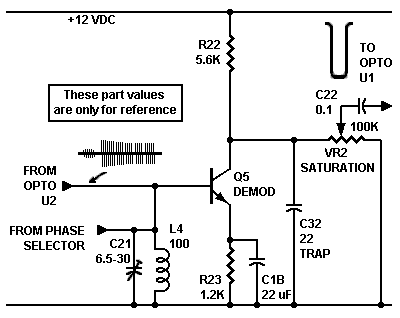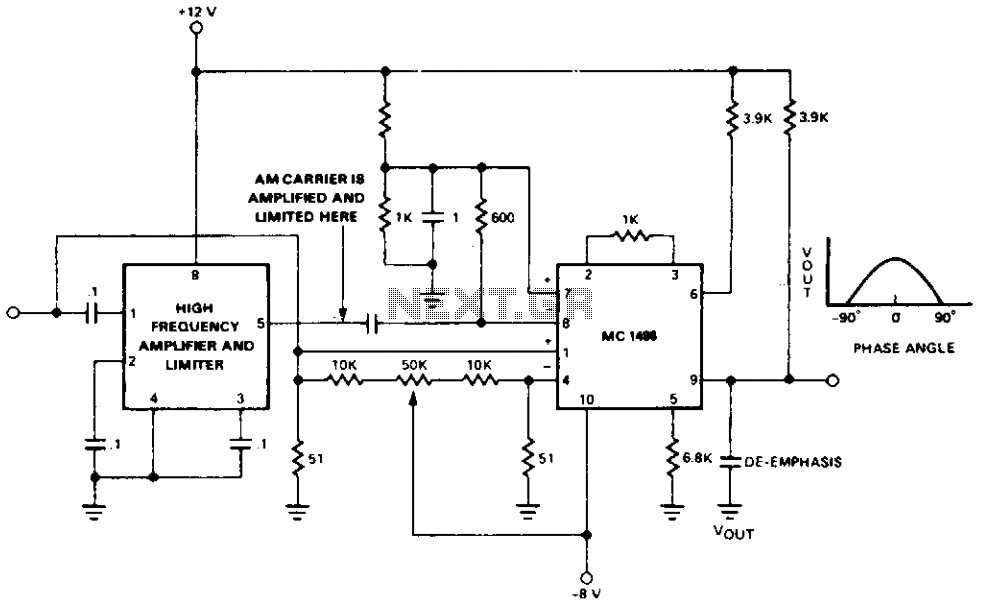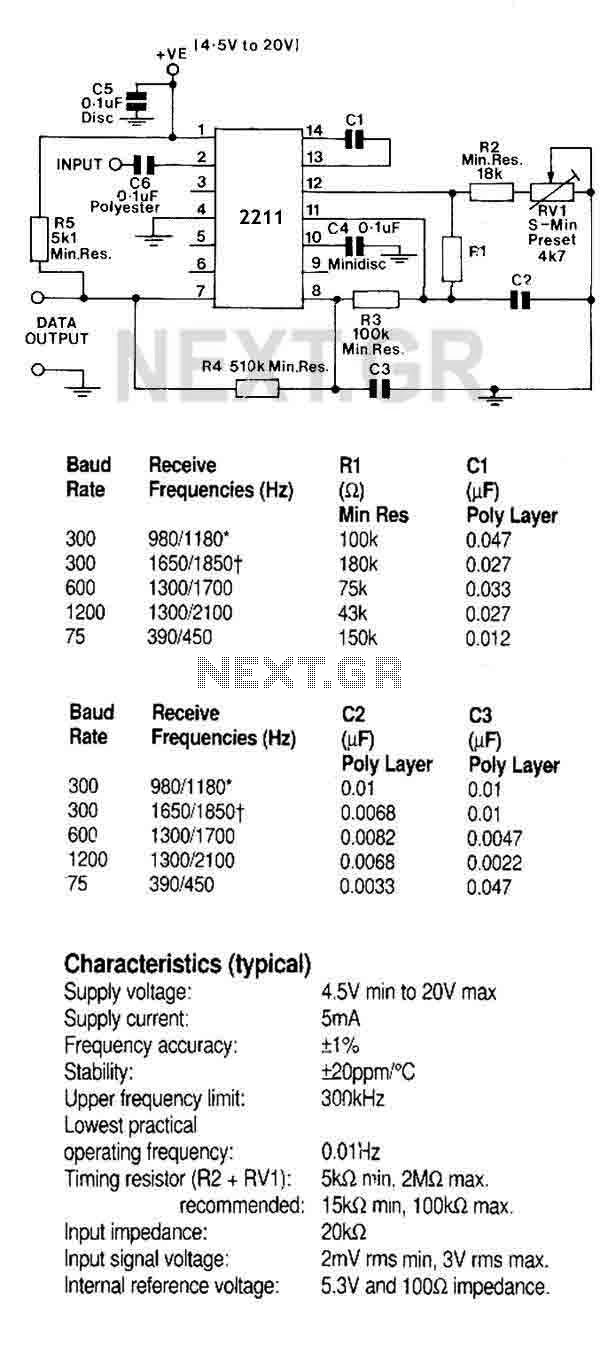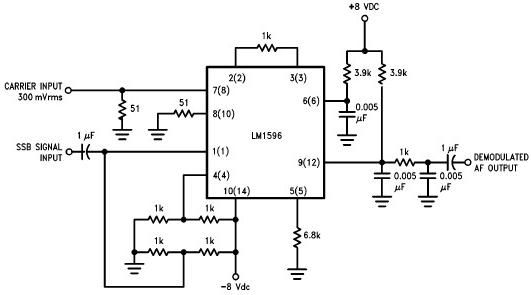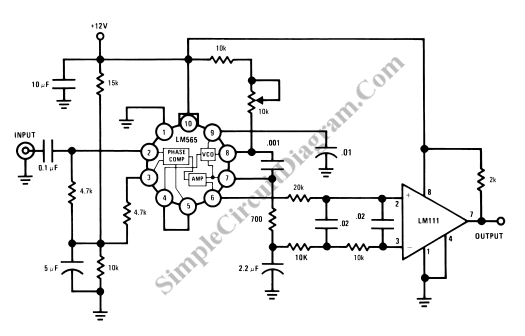
Fm demodulator
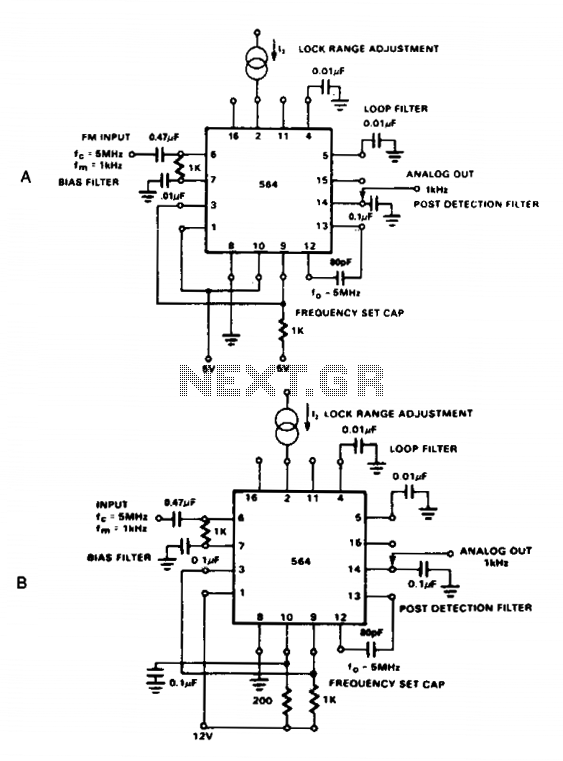
The NE564 functions as an FM demodulator. The operational connections for both 5 V and 12 V configurations are illustrated in Figures 21-4A and 21-4B. The input signal is AC coupled, with the output signal extracted from Pin 14. Loop filtering is implemented using capacitors connected to Pins 4 and 5, with additional filtering provided by a capacitor at Pin 14. It is important to note that due to the relatively low conversion gain of the Voltage-Controlled Oscillator (VCO), a frequency deviation of 1% or greater in the input signal is necessary to achieve an adequate demodulated output signal.
The NE564 is a versatile integrated circuit designed for frequency modulation (FM) demodulation applications. This device operates effectively in both low-voltage (5 V) and standard voltage (12 V) environments, making it suitable for various electronic systems. The AC coupling of the input signal is crucial, as it ensures that only the varying component of the signal is processed, eliminating any DC offset that could distort the demodulated output.
The output signal is taken from Pin 14, which is strategically designed to provide a clean demodulated output. Loop filtering is a critical aspect of the NE564's operation, as it stabilizes the demodulation process and enhances signal integrity. Capacitors connected to Pins 4 and 5 serve to filter out unwanted high-frequency components, while the additional capacitor at Pin 14 further refines the output signal, ensuring that it is free from noise and distortion.
It is essential to consider the conversion gain of the VCO when designing systems that utilize the NE564. The relatively low gain necessitates that the frequency deviation of the input signal be maintained at 1% or higher. This ensures that the demodulated output signal is sufficiently strong for further processing or amplification in downstream circuits. Overall, the NE564 is an effective solution for FM demodulation, provided that the design parameters are carefully adhered to, particularly concerning input signal characteristics and filtering requirements.The NE564 is used as an FM demodulator. The connections for operation at 5 V and 12 V are shown in Figures 21-4A and 21-4B. The input signal is ac coupled with the output signal being extracted at Pin 14. Loop filtering is provided by the capacitors at Pins 4 and 5 with additional filtering being provided by the capacitor at Pin 14. Since the conversion gain of the VCO is not very high, to obtain sufficient demodulated output signal the frequency deviation in the input signal should be 1% or higher.
The NE564 is a versatile integrated circuit designed for frequency modulation (FM) demodulation applications. This device operates effectively in both low-voltage (5 V) and standard voltage (12 V) environments, making it suitable for various electronic systems. The AC coupling of the input signal is crucial, as it ensures that only the varying component of the signal is processed, eliminating any DC offset that could distort the demodulated output.
The output signal is taken from Pin 14, which is strategically designed to provide a clean demodulated output. Loop filtering is a critical aspect of the NE564's operation, as it stabilizes the demodulation process and enhances signal integrity. Capacitors connected to Pins 4 and 5 serve to filter out unwanted high-frequency components, while the additional capacitor at Pin 14 further refines the output signal, ensuring that it is free from noise and distortion.
It is essential to consider the conversion gain of the VCO when designing systems that utilize the NE564. The relatively low gain necessitates that the frequency deviation of the input signal be maintained at 1% or higher. This ensures that the demodulated output signal is sufficiently strong for further processing or amplification in downstream circuits. Overall, the NE564 is an effective solution for FM demodulation, provided that the design parameters are carefully adhered to, particularly concerning input signal characteristics and filtering requirements.The NE564 is used as an FM demodulator. The connections for operation at 5 V and 12 V are shown in Figures 21-4A and 21-4B. The input signal is ac coupled with the output signal being extracted at Pin 14. Loop filtering is provided by the capacitors at Pins 4 and 5 with additional filtering being provided by the capacitor at Pin 14. Since the conversion gain of the VCO is not very high, to obtain sufficient demodulated output signal the frequency deviation in the input signal should be 1% or higher.
